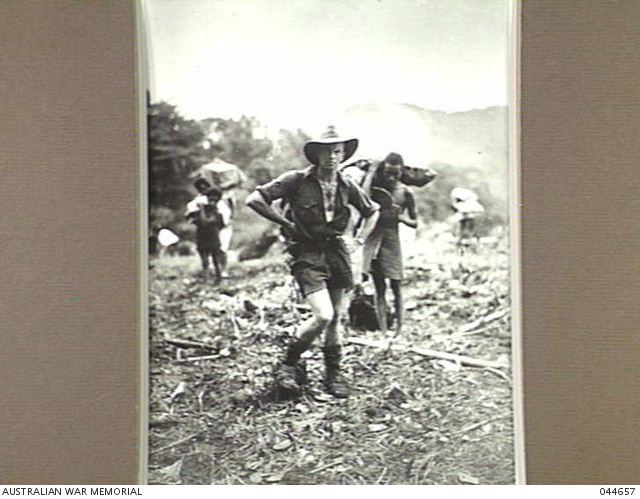Ivor Hele is Australia's longest serving official war artist. A talented young artist, in the 1920s and again in the early 1930s, Hele travelled to Europe, studying in Paris with Louis-Francois Biloul, and then in Munich with Moritz Heymann. Returning home to Adelaide, Hele taught life drawing classes at the South Australian School of Arts and Crafts, but also steadily built a reputation as a superb draughtsman and figurative painter. His work attracted the attention of Louis McCubbin, former official war artist of the First World War and Director of the National Gallery of South Australia. He also caught the keen eye of General Officer in Command of the 6th Division Australian Imperial Forces (AIF) Lieutenant General Thomas Blamey.
At the urging of Louis McCubbin, Hele enlisted with the 2nd AIF on 29 June 1940, allotted to the Intelligence Headquarters of the 2/48th Battalion. This was with the hope he may soon be appointed an official war artist. In early January 1941, and now in the Middle East, Blamey appointed Hele a war artist, elevating him from Private to Lieutenant, giving him a batman-driver and vehicle, and sending him into Libya to cover those operations. The 2/48th Battalion unit diary marked the occasion, 'Hele is a brilliant painter, and has been longing for a "sniff" of his paints ever since he enlisted. His department is both a loss to the Bn and to his many friends'.
Desert warfare moved quickly, and Hele was constantly on the move, seeking to be as close to the action as possible. He created sketches in the field, his European art training proving invaluable, using deft lines in charcoal, and conte crayon to economically depict Italian and German prisoners, and Australian diggers. Preferring to work indoors, Hele was temporarily housed in a Cairo studio but was then allowed to return home to work in his Aldinga studio in South Australia. By now a Captain, he summarised his Middle East observations in the large composition, Australian troops disembarking at Alexandria after the evacuation of Greece [ART22230].
In mid-1943, Hele was sent to New Guinea. Joining the 2/3rd Independent Company in Salamaua, he recorded action at Timbered Knoll where he was joined by cinematographer Damien Parer. Years later he recalled they were shot at by the Japanese. Hele drew the realities of combat including dead Japanese in foxholes, and the burial of Australian soldiers - a scene he later painted in Battlefield burial of three NCOs [ART22560]. Hele also recorded with sensitivity, portraits of the soldiers and of New Guineans, but also soldiers engaged in routine work.
In the last three months of 1944, Hele made a second trip to New Guinea, this time predominantly with the 2/10th Australian Cavalry Commando Squadron, but also the infantry in general. Often working with pen and ink, or pencil on paper, Hele showed soldiers out on patrol, but also interactions with Japanese prisoners, portraits, and engineers at work. During this deployment, Hele was involved in a jeep accident, where he lay unconscious for three days, his nose later requiring surgery. In the years following the end of the Second World War, Hele created a series of paintings of the 2/10th unit based on this second New Guinea trip.
After the war, Hele continued receiving commissions from the Australian War Memorial, and in 1952, he accepted a role as official war artist to Korea. This time the appointment was on his terms: he would have the rank and pay of a Major; be deployed for four months; not travel with the navy; and be free to choose his own subjects. Once in Korea, Hele observed the daily activities of the army: digging, wiring, and troops in trenches. He also spent time with the 77 Squadron, Royal Australian Air Force. With no Military History Section in Korea, Hele's works became a valuable record of the Australian experience in Korea.
Throughout his appointments as an official war artist, Hele was allotted to the army, not to the Military History & Information Section. This enabled him to move within the field, a flexibility that was not afforded to other official war artists who operated through the Section. Hele was able to build camaraderie with his fellow soldiers, perhaps borne from his initial enlistment in the army, but also his daring to be on or near the front line. He was dedicated to depicting the raw experience of the Australian soldier. On seeing Hele's work in 1945, Private Harry Resnick said, 'It's the real thing all right. I've been up there and I know'.









